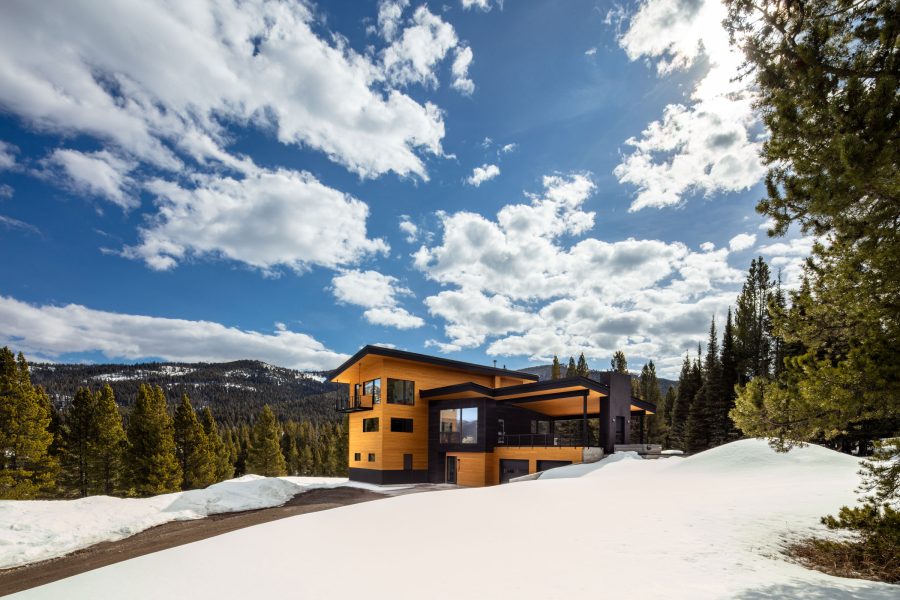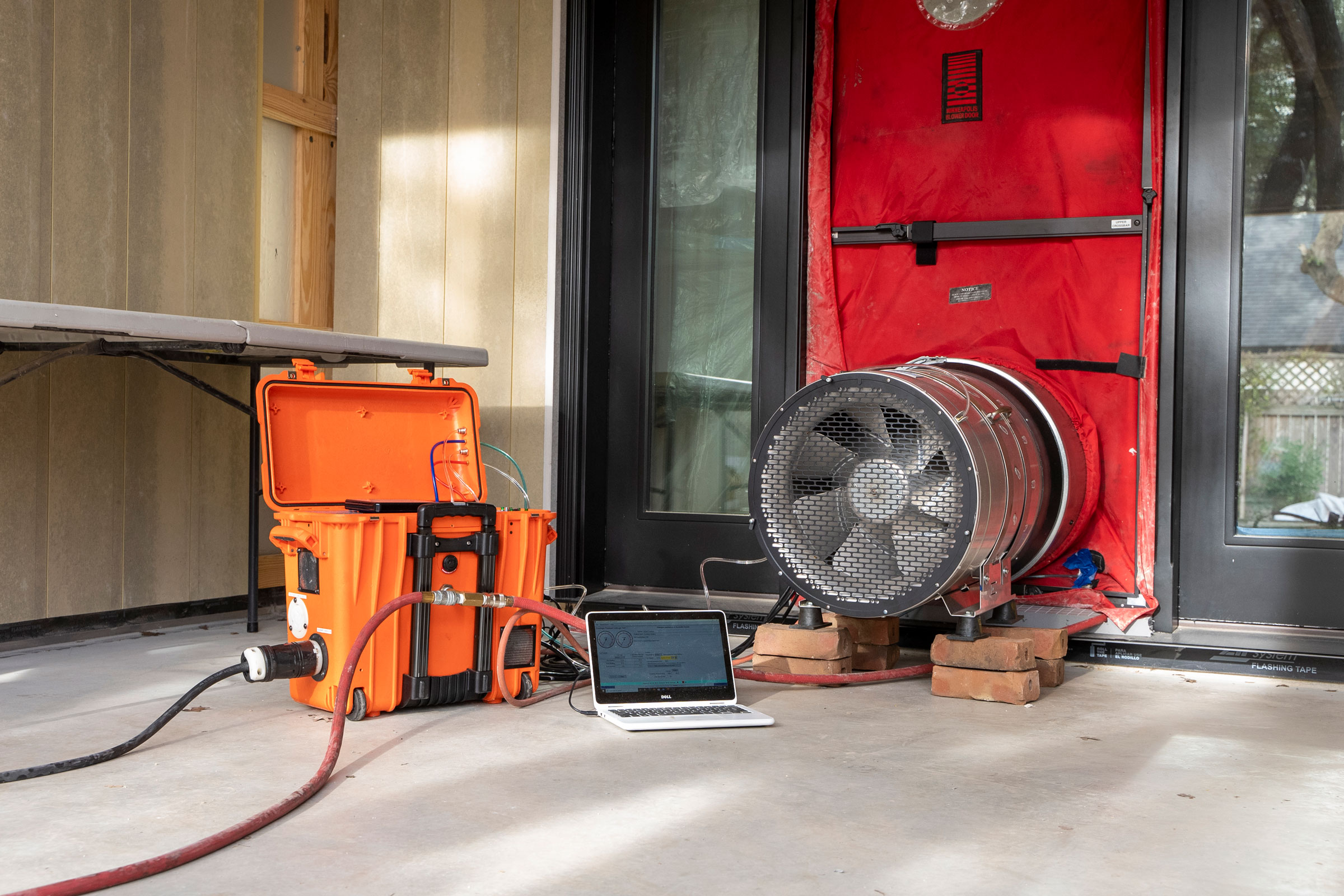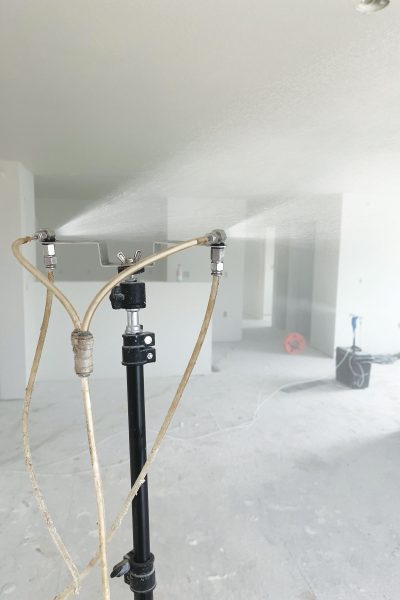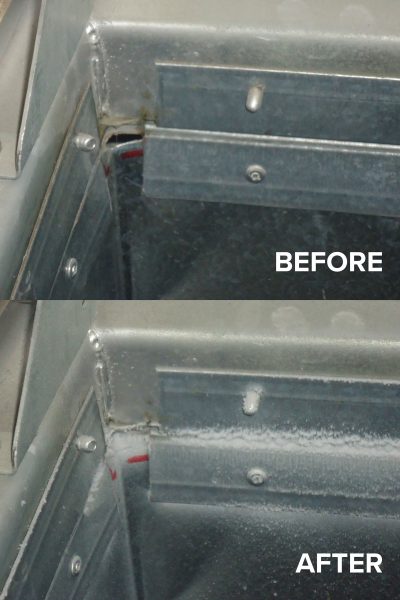Story at a glance:
- One of the biggest gains in energy usage and efficiency is through proper air sealing and insulation.
- Sealant technology can pinpoint and address cracks and gaps within a day, minimizing disruption.
- Manufacturers and architects share their insights on the importance of air sealing to a project’s overall energy efficiency.
Regardless of building type or age, occupant comfort is a top contributor to overall happiness and productivity for the people inside the building. The temperature and quality of air inside homes and commercial spaces is a key contributor to indoor comfort. If not controlled well, this can come at a price to the environment and energy efficiency, too.
The commercial and residential building sector accounts for 31% of greenhouse gas emissions in the US, according to the EPA. Many of a building’s core systems—including lighting, HVAC, and equipment and appliances—rely on energy to run, while maintaining occupant comfort, health, and safety.
Heating and cooling lead as the main consumers of energy in both commercial and residential buildings. In a typical home about 20 to 30% of the air moving through the duct system is lost due to leaks, holes, or poorly connected ducts, according to EPA estimates, resulting in a significant use of energy.
Proactive Ways to Curb Energy Waste
- Sealant technology can pinpoint and address cracks and gaps within a day, minimizing disruption. Photos courtesy of Aeroseal
- Image courtesy of Aeroseal
Small changes, like adjusting a thermostat or swapping more efficient equipment, can have a big impact on energy efficiency and, in turn, greenhouse gas emissions. But implementing these practices alone isn’t enough.
“The biggest bang-for-your-buck opportunity to improve energy use is in your air sealing and insulation of your structure,” says Lindsay Schack, founder and principal architect of Love Schack Architecture.
“If you’re not sealing properly between the assemblies, among all the ventilation, mechanical units, openings, doors, windows, thresholds, everything, you’re giving up on energy that’s inside the structure,” the certified PHIUS consultant says.
The goal for efficiency, conservation, and comfort is thermal continuity. Keep a space stable at the optimum thermal level at all times through balanced ventilation, which includes keeping outside air away and inside air from escaping. “The way to achieve that is to have good air sealing,” Schack says.
She offers a visual check to look at a building’s profile, pretend to cut it in half, and draw a continuous line all the way around, from the floor up the wall over the ceiling back down again. Vulnerabilities often occur where windows or doors connect, and where walls and roof come together, Schack says.
Gone are the days of poor ventilation and sick building syndrome. Today is about controlling emissions, waste, and air quality due to leaks in ducts.
Prioritize Duct and Envelope Integrity

The Bridger Canyon residence in Bozeman, Montana, was designed by Love Schack Architecture to passive house standards. Photo by Cody Brown, courtesy of Love Schack Architecture
Supply, equipment, or return duct leaks can compromise indoor air quality by bringing in air from places it shouldn’t be pulled (for example, the outdoors, attics, or crawl spaces), says Amit Gupta, CEO of Aeroseal, a leading manufacturer of duct and air sealing technology. The benefits of duct sealing are many—from overall comfort and money savings to improved air quality and safety.
Both Gupta and Schack agree that an airtight building with a reliable, well-functioning duct system helps move air where it’s intended. “Duct sealing is really important for balanced systems to work effectively,” Schack says.
All buildings—new construction or retrofit, residential or commercial—are susceptible to leaks. The challenge lies in both finding and accessing leaks, since ductwork is typically right behind a wall or ceiling.
“To seal all around the ducts is close to impossible; you can’t get your hand around it,” Gupta says. “If you can’t put tape around it, the ducts are left leaking all throughout the building’s life.”
Targeting Leaks with Minimal Disruption
To address the hard-to-reach inevitable gaps and cracks in ductwork or envelope, Aeroseal offers a nontoxic aerosol sealant solution to stop leaks where they occur.
Before sealing begins, HVAC professionals pressurize the ductwork and protect vital equipment, and a pressure test runs to measure initial leakage. Next, Aeroseal adhesive particles are heated, aerolizing them so that they are suspended in the air. The particles are then blown into the ducts, where they adhere to gaps and cracks, slowing filling them in until they are sealed without compromising other areas of the ductwork.
The automated process monitors to optimize overall effectiveness, with building or homeowners receiving a detailed before-and-after certified report that highlights results and air saved.
Unlike traditional sealing methods, which may have messy application methods, limited durability, or continued maintenance and upkeep, Aeroseal advantages are speed, quality, and level of seal, Gupta says. The duct sealant resists mold, mildew, and moisture.
With Aeroseal a duct system can be sealed in hours, and an envelope in a day. This is especially important for retrofits where people may be living or working. In retrofit situations, Aeroseal can reach leaks behind ceilings and walls—something that cannot be done by any traditional method without demolition and reconstruction, offering old homes and buildings a way to become significantly more energy-efficient without the typical high costs associated with a teardown and rebuild to get to the ductwork.
Gupta gives an example of hospitals and hotels, where air quality and minimizing disruption are important. He explains how these areas are treated, isolating a small section of the building where each air handler is—typically 10 or 20 rooms—servicing the area in a few hours. “By the time we clean up and leave the air handler is back on and people can move in. There’s no downtime at all,” Gupta says.
Sustainable Impact

Meadow House in Wyoming sits on 6.55 acres and was designed by Love Schack Architecture to prioritize energy efficiency, sustainability, and a deep connection to nature. Photo by Tuck Fauntleroy, courtesy of Love Schack Architecture
Experts say duct sealing is an immediate solution to help make projects greener. It doesn’t involve any occupant or owner behavior changes and can contribute to building and home certifications. And the results are immediate.
“We don’t need to wait for Aeroseal’s solutions to be applied 10 years from now; we can start fixing our buildings today. We can start reducing and making the environment better, more sustainable today,” Gupta says.



